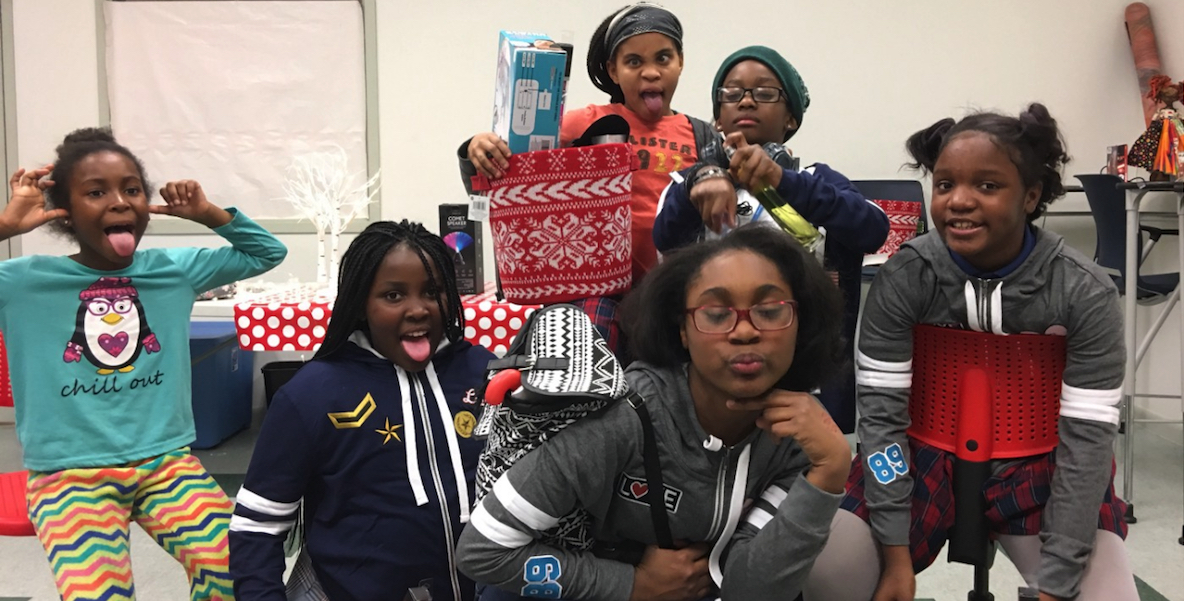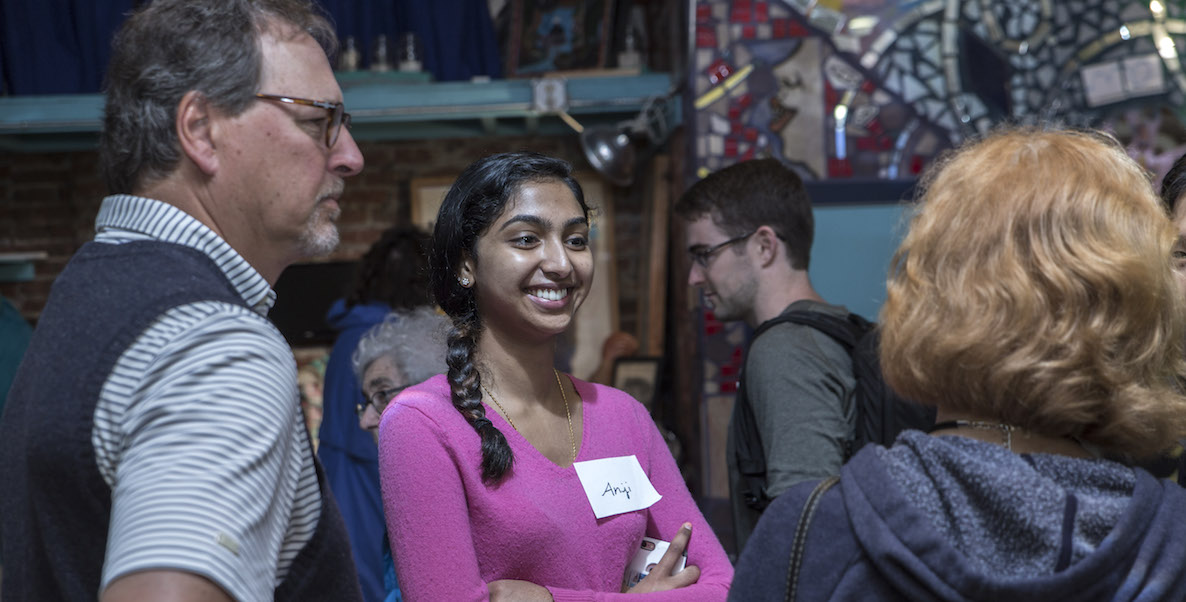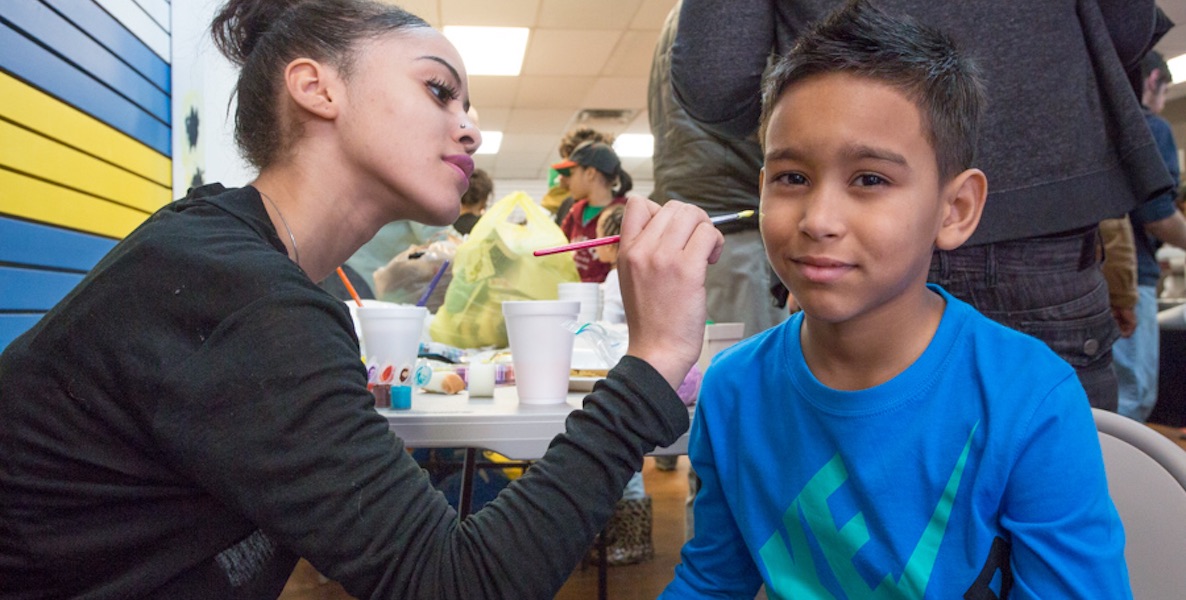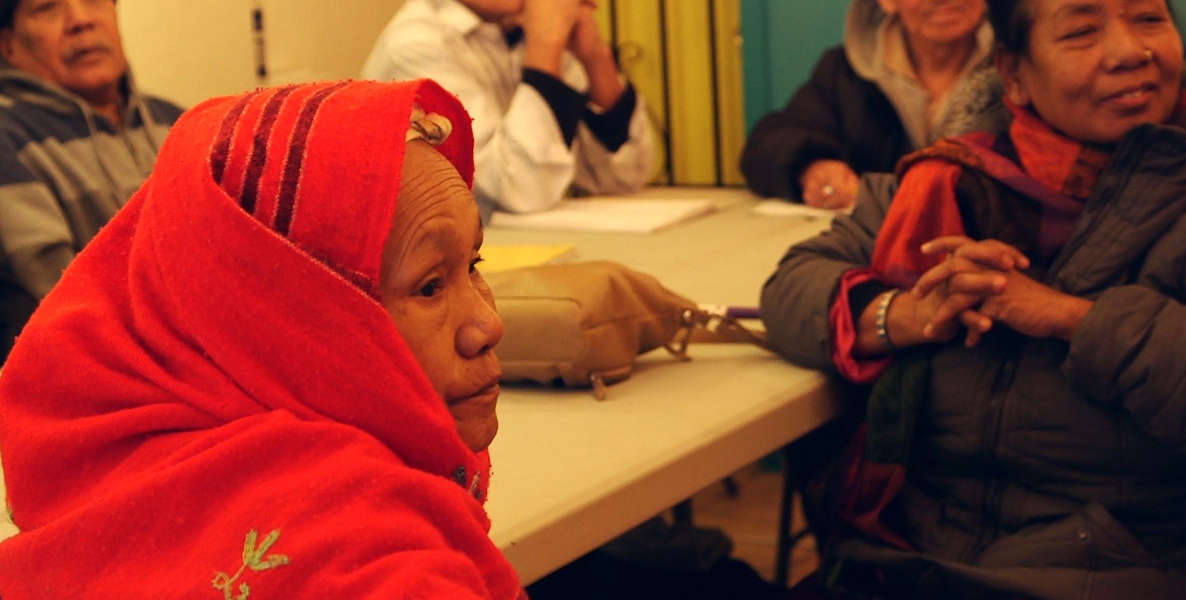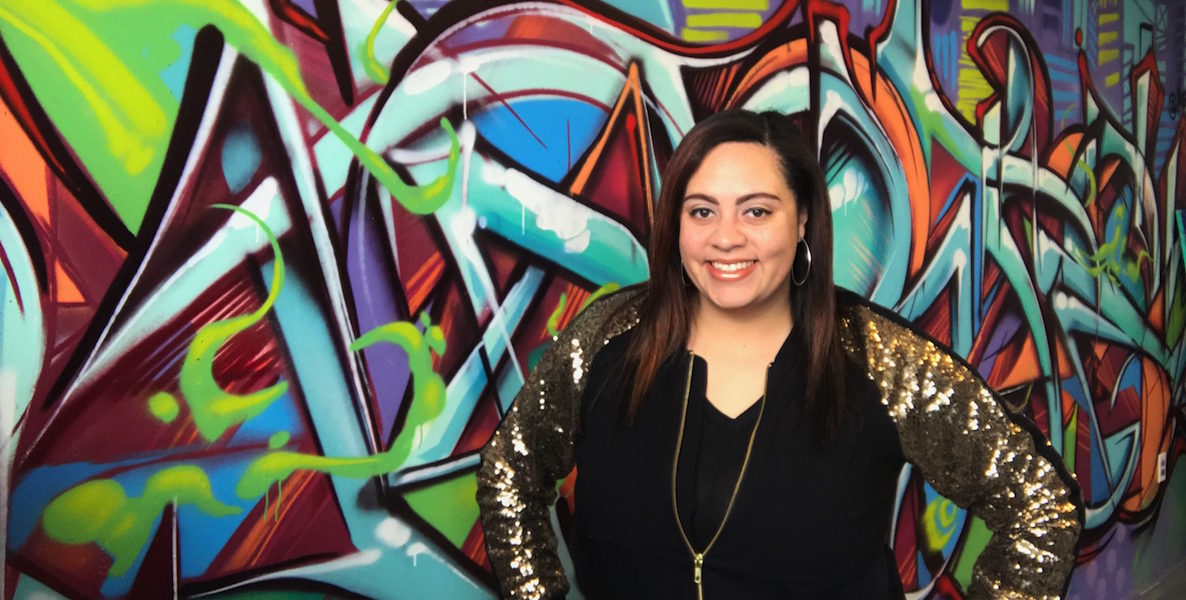Meagan Corrado, a therapist in Camden and Philadelphia, had been working with traumatized minority youth for several years when she realized that her training had not actually prepared her to treat her clients in the way they needed.
The youth she met were experiencing trauma from a variety of sources—incarcerated parents; gunfire, murders and other violence in their neighborhoods; all the issues that go along with poverty, and displacement. But the talk therapy methods she’d learned in training and literature fell short in actually healing her adolescent clients.
“I was working with people who looked like me—minorities,” says Corrado, who is African American. “There was hardly anything out there for them relating to trauma resources.”
Corrado, a survivor of trauma herself, knew she needed a different way to reach her clients. So she turned to something that helped her heal when she was neglected as a child by her caregivers: Art.
“One thing we know about trauma is that it’s a sensory experience for people,” says Ellissa Collier, of Mural Arts. “The arts are also a sensory experience. One of the successes of Storiez, because it is arts-based, is that it’s able to bring the past memories into the present where they can be processed by the frontal cortex.”
As part of her doctoral dissertation at Penn, Corrado in 2015 launched Storiez, an arts-based intervention and narrative treatment tool that helps trauma-impacted children organize memories and feelings into something manageable, like a booklet, collage, dance, or other former of art, with additional help from original resources like informational guidebooks, step-by-step videos, and workbooks created by Corrado.
The result is adolescents who go from feeling helpless, to envisioning a life outside of their trauma.
Corrado, who has used Storiez intervention therapy with Philadelphia youth since 2009, before the process was even named, and with clients in her own Camden, NJ practice since 2014, has now brought Storiez to several community organizations that work with traumatized children, including the Center for Grieving Children, the Abramson Center, and Mural Arts Philadelphia. In the last two years, she’s trained around 700 clinicians, non-clinicians and community members in Philly and New Jersey to use Storiez—including a 20-hour training workshop over two weeks with staff at Mural Arts this year.
“One thing we know about trauma is that it’s a sensory experience for people,” says Ellissa Collier, Restorative Justice Youth Program Manager at Mural Arts. “The arts are also a sensory experience. One of the successes of Storiez, because it is arts-based, is that it’s able to bring the past memories into the present where they can be processed by the frontal cortex.”
“It’s a huge sign of success when kids who told me at the beginning of treatment, ‘I don’t think I’m going to even make it to 16,’ say to me, ‘This is what I want for my future vision,’ and are thinking past next month or next year,” says Corrado.
Storiez is a one to three month program, starting with a client documenting a timeline of life events—both positive and negative—onto notecards. After completing their notecard timeline, the client chooses a medium through which to express their experience, like a collage, a video, or a song. Taking each card and revisiting details of the event, the client eventually learns to mentally organize their story and translate it into their chosen medium. Finally, the client creates a “future vision” for themselves. Corrado, who experimented with Storiez on herself, turned her stack experience notecards, both good and bad, into a colorful mosaic, using broken bits of glass to create a whole—a powerful metaphor for her work.
“It’s a huge sign of success when kids who told me at the beginning of treatment, ‘I don’t think I’m going to even make it to 16,’ say to me, ‘This is what I want for my future vision,’ and are thinking past next month or next year,” says Corrado, who is also a part-time lecturer at the University of Pennsylvania’s School of Social Policy & Practice.
In Philadelphia, school district officials estimate that more than half of students have experienced a traumatic event in their lives, and many of those have experienced several such events. Untreated, this can have long-lasting effects. Often, traumatized youth struggle in school, possess low self-esteem, have difficulty focusing on different tasks, are hesitant to trust others, become violent themselves. That can make even simple acts of learning complicated.
Corrado hears about all of that in her work. But she also hears about her clients’ strengths and resilience, the tools they use to survive their days. It’s that she taps into with Storiez—helping them use their strengths to combat their sorrows. That translated into better skills in school and outside.
Collier has witnessed this at Mural Arts, which has started to incorporate Storiez into its restorative justice programs, helping incarcerated youth come to terms with their past.
“Teachers are seeing changes in behavior,” Collier says. “Students are more able to emotionally regulate in a positive and healthy way during class. It’s a therapeutic intervention that does not necessary need someone with a PhD.”
Corrado understands what her clients are going through. She says in high school, as a result of being around depression, loss, and conflict as a child, she grew into a supportive friend and a good listener. “I had to absorb pain to survive the circumstances of my early childhood,” she says. “I felt abandoned a lot. One of my survival strategies has always been being creative. And it’s always been me absorbing other people’s pain.”
Until recently, Corrado funded all the materials and research that went into developing Storiez herself, publishing six books through Amazon. She now receives some payment from community partners for the training sessions. And she is in the process of exploring grants, including one from Rowan University, that would allow her to develop a tool for better measuring outcomes and allow the program to grow along with the needs of her clients.
“There’s something validating when a child is able to see and use a resource that they know was created for them,” says Corrado. “Kids can feel and sense when something is made for them instead of when it’s adapted for them.”



